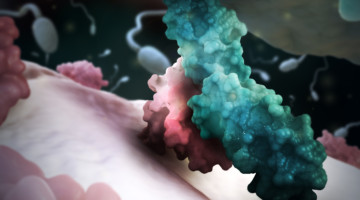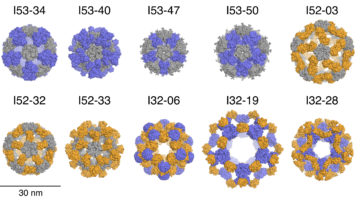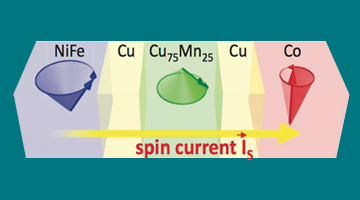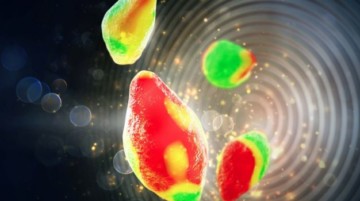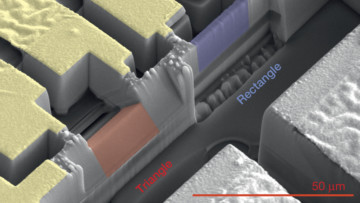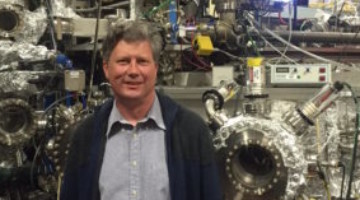Researchers have uncovered the first interactions between the human sperm and egg—the initial steps in the creation of human life. The discovery lays a foundation to better understand fertilization and could lead to the development of non-hormonal contraceptives. Read more »
All News & Updates
Designed Protein Nanocages Inspired by Nature
Inspired by protein molecules observed in nature, researchers have now engineered ten large, 120-subunit, two-component protein complexes. These designed nanomaterials are attractive starting points for new approaches to targeted drug delivery, vaccine design, and bioenergy. Read more »
Formation of Toxic Furans during Combustion
Researchers predicted and observed for the first time the formation and growth of furans and other oxygenated hydrocarbons produced during combustion. These compounds can have a wide range of detrimental effects on human health, air quality, and regional and global climate. Read more »
How to Directly Probe ac Spin Currents
Scientists working at the ALS have made the first unambiguous, direct measurements of ac spin currents flowing through nanostructured metal layers. The work represents a crucial step toward the development of future spintronic devices that are smaller, faster, and more energy efficient. Read more »![]()
![]()
ALS-U Receives DOE Mission-Need Approval
On September 27, the ALS received news that the Department of Energy (DOE) has approved the mission need (also known as critical decision zero, or CD-0) for the ALS Upgrade (ALS-U). Read more »
Peering Into Batteries: X-Rays Reveal Lithium-Ion’s Mysteries
Researchers are using the Office of Science’s advanced light sources, including the ALS, to understand why and when lithium-ion batteries in phones, plug-in electric vehicles, and other applications lose charge or fail. Read more »
Transformational X-Ray Project Takes a Step Forward
DOE has confirmed the need for a unique source of X-ray light that would produce beams up to 1,000 times brighter than are now possible at Berkeley Lab’s Advanced Light Source, enabling new explorations of chemical reactions, battery performance, biological processes and exotic materials. Read more »
Scientists Find Twisting 3-D Raceway for Electrons in Nanoscale Crystal Slices
Researchers have observed, for the first time, an exotic 3-D racetrack for electrons in ultrathin slices of a tiny crystal they made at Berkeley Lab. Read more »
A Conscious Coupling of Magnetic and Electric Materials
Scientists have successfully paired ferroelectric and ferrimagnetic materials so that their alignment can be controlled with a small electric field at near room temperatures, an achievement that could open doors to ultralow-power microprocessors, storage devices and next-generation electronics. Read more »
Andreas Scholl, Senior Staff Scientist and ESG Deputy
Andreas Scholl recently became a senior staff scientist, a job title that he sees not necessarily as indicative of a different job, but rather of the gradual change in his responsibilities over his 18 years at the ALS. Read more »
- « Previous Page
- 1
- …
- 102
- 103
- 104
- 105
- 106
- …
- 126
- Next Page »
